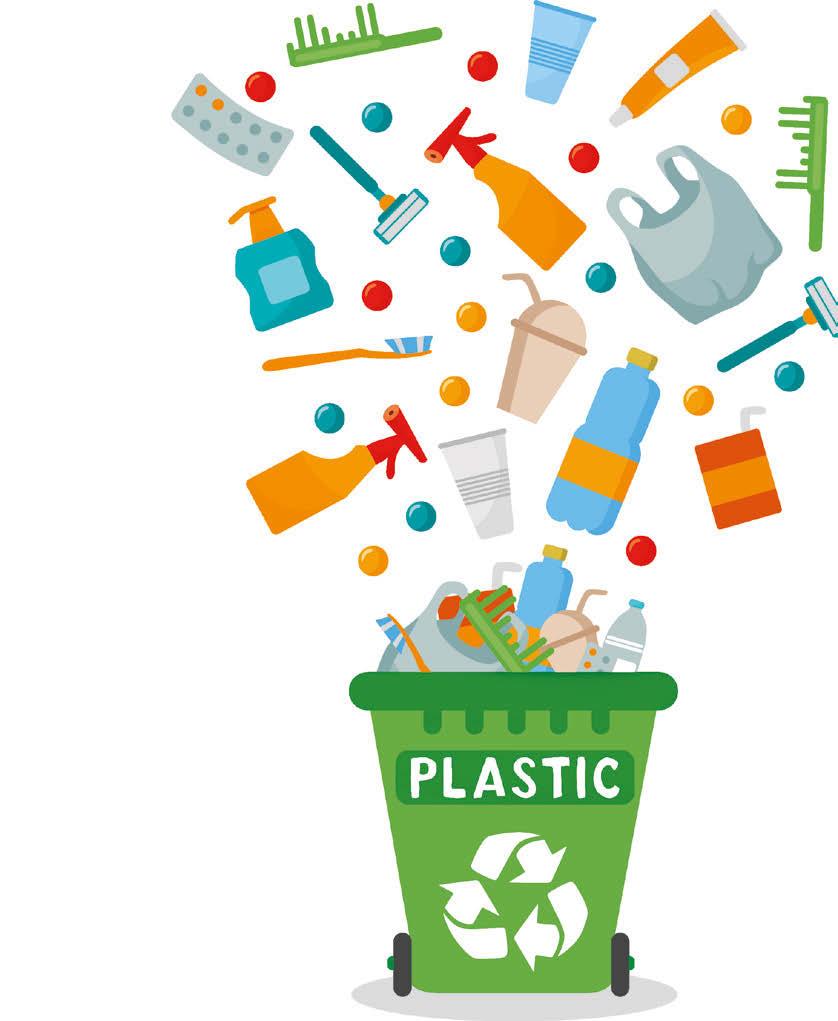
3 minute read
The Problem with Plastics
from Glo - April 2020
By Mary Jane Bogle
Single-use plastics are a growing problem for our society, perhaps more than most consumers realize. Not only do plastics litter our walkways and pose a threat to all kinds of wildlife, but they also find their way into our food. According to Jodi Leamon, sustainability coordinator at the Allen County Department of Environmental Management, most Americans consume a credit card-sized amount of microplastic per week!
Want to know what you can do to stop the trend? First, education is key. Here, we dispel three common myths about single-use plastics and offer some suggestions on ways you can make a difference in your community today.
Myth #1: I never use plastic water bottles, and I always refuse a straw at restaurants, so I’m doing my part.
Fact: Single-use plastics come in all kinds of packaging, everything from dishwasher pods to chip bags and granola bar wrappers. Any package that is crinkly or has a shiny, metallic look is plastic, too. And don’t forget about shampoo bottles, toothbrushes and deodorant containers.
Myth #2: If I do use plastic, I always put it in the recycling bin, so there’s no problem, right?
Fact: Most plastics that do get recycled are lightweight and small, so they have a tendency to fly out of recycling bins and trucks, making their way into the environment. And many plastics can never be recycled, since they are formed from different types of plastics fused together to form the single-use product. Myth #3: Tiny bits of plastic that are too small to see, called microplastics or even nanoplastics, are primarily an ocean problem.
Fact: Microplastics aren’t just an ocean issue. Consider the process. Plastic is made from petroleum that is drilled out of the earth and then transported long distances, where it’s made into single-use items and then transported again. By the time it gets to the consumer, it’s already made a huge impact on the environment.

So what can consumers do?
Step #1: Reduce
An easy first step is refusing convenient takeaway items, such as straws, utensils and plastic water bottles or containers. And remember this rule: “BYO wherever you go.” For example, bring your own coffee cup to your favorite grind or take your own containers to food trucks.
Step #2: Consider Eco-Swaps
Replace plastic baggies with glass or reusable containers. Take your own bags to the grocery story. (A bag made from natural fibers is best.) Look at the packaging on items you buy to see if the package is recyclable. And buy produce at your local farmer’s market, where you can sometimes find bees wax wrap instead of cling wrap, along with homemade soaps, shampoos and conditioners. One glo reader, Ashley Sharp, even makes and sells her own deodorant. (You can connect with her through Fox and Fodder on Facebook and Instagram.)


• By 2015, the world had produced 7.8 billion tons of plastic – more than a ton of plastic for every person on the earth. • Before 1980, recycling and incineration of plastic was negligible; 100% was therefore discarded. • In 2015, an estimated 55% of global plastic waste was discarded and less than 20% was recycled. • 18 billion pounds of plastic waste flows into the oceans every year—that’s the equivalent of 5 grocery bags of plastic trash sitting on every foot of coastline around the world. • 40% of plastic produced is packaging, used just once and then discarded.
• Nearly a million plastic beverage bottles are sold every minute around the world.
Step #3: Advocate
Consider reaching out to your favorite brands and ask them to work with the recycling industry to create packaging that is recyclable. Never underestimate the power of the purse. Your voice matters. Together, we can make a difference. a











